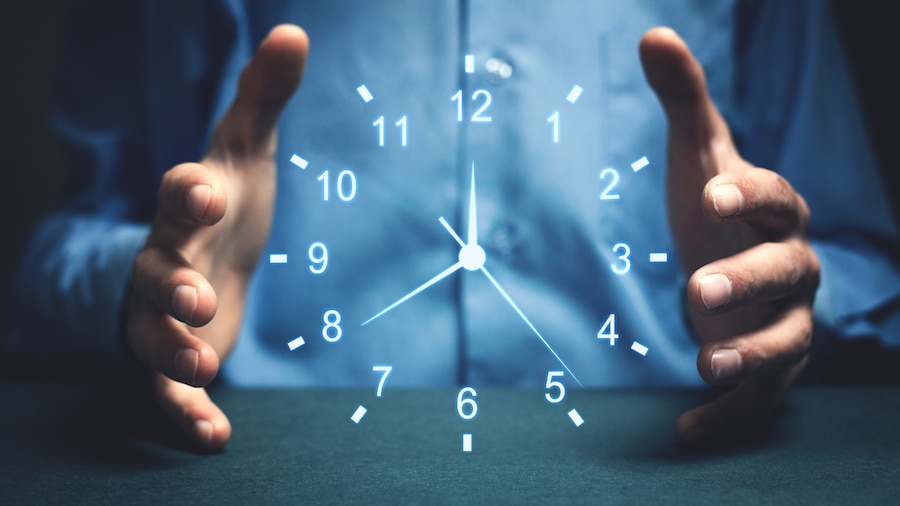“I must govern the clock, not be governed by it,” said Golda Meir, politician, teacher, and Israel’s fourth prime minister.
We could all use more time in our day, whether we’re grinding through a tax season crunch or working on strategies and projects to grow our firm. Yet, on some days, it can seem impossible to fit our ever-growing task list into 24 hours.
Personally, I’ve been spending a lot of time reflecting on how I use my time, as my team and I have permanently moved to a hybrid, “work from anywhere” model. Adopting this as a permanent part of our firm has been a great nudge for us to improve our time management skills. I’ve rounded up the top tips we’ve learned or used to ensure that we stay productive, whether we’re in the office, at home, or at a local coffee shop.
#1: Create your schedule around your priorities, not the other way around
What are the biggest things you have to get done every day? This question isn’t just for your workday, but also for your personal life. What personal habits do you want to start, but haven’t, because you “haven’t had enough time?”
While working remotely, Adolfo Marquez—our marketing manager —has found it helpful to organize his daily to-do list around three to five big tasks, and once he’s allocated time for those items, sprinkle in smaller, not-as-important tasks. This ensures that he has a productive day and keeps him from getting derailed by rabbit trails or trivial stuff that comes up throughout the day.
The lesson here is simple, yet powerful: If you don’t prioritize it, it won’t happen.
#2: Triage your day between urgent and important
The Eisenhower Matrix, named after former President Dwight D. Eisenhower, can help you distinguish between your important and urgent tasks. As shown in “The Mere Urgency Effect” study, we tend to prioritize tasks with a shorter expiration date over tasks with a larger payoff.
Here are the specific ways you can use the Eisenhower Matrix to sort through your to-do list:
- Quadrant 1: This box is for the urgent and important tasks that must be done immediately, such as deadline-driven projects or genuinely urgent client emails.
- Quadrant 2: This area is for the non-urgent, but important tasks that must be planned, such as building relationships or improving systems.
- Quadrant 3: This box is for urgent, but unimportant tasks that aren’t the best use of your time but must be done, such as calls, meetings, or emails with little value. These can be delegated to others.
- Quadrant 4: This area is for non-urgent and unimportant tasks that are essentially busywork or time sucks. These tasks can either be eliminated or automated.
Once you’ve triaged your task list, you’ll be able to better control the “input” that comes into each day and, as a result, control each day’s outcome.
#3: Create a work environment that promotes focus
To truly be productive, you must create an environment that enables focus. This has been one of the biggest lessons my team and I have learned, while alternating between our homes and our office. There are many different ways you can create an environment that is conducive to focus and heightened productivity, including:
- Reducing smartphone notifications: Our smartphones can be useful tools or our biggest distractors, which is why you should use Do Not Disturb to silence the chirps and dings. One of our CPAs, Victor Godinez, even puts his phone in another room, so that he wouldn’t be distracted while working from home.
- Organizing your personal life: Although I enjoy working from home, I’ve found that it’s difficult to get things done when the dishes aren’t done, or the living room floor isn’t vacuumed. Now that my family and I have established a better routine for keeping the house tidy, I’m able to focus better and get more done.
- Dealing with anticipated interruptions: One of our accountants, Fabiola Ramirez, makes her personal life easier by figuring out dinner in advance through meal prepping for the week, slow cooking it while she works, or scheduling a takeout order when she’s pulling late hours. Of course, the idea of proactively minimizing distractions can work for most other workday disruptors as well.
“I don’t have time” is just an excuse
When I catch myself making excuses for why I haven’t started something, I remind myself that everybody gets 24 hours. The key to getting things done is determining your priorities, allocating time to attend to them, and then filling the rest of your time with other less important tasks. When you do this, you’ll be able to finish a workday without feeling guilty for neglecting your goals, whether they’re personal or professional.
We can choose our goals and use our time to achieve them, or we can drift through life aimlessly and slowly let time slip away. The choice is ours and ours alone. What do you have time for?
